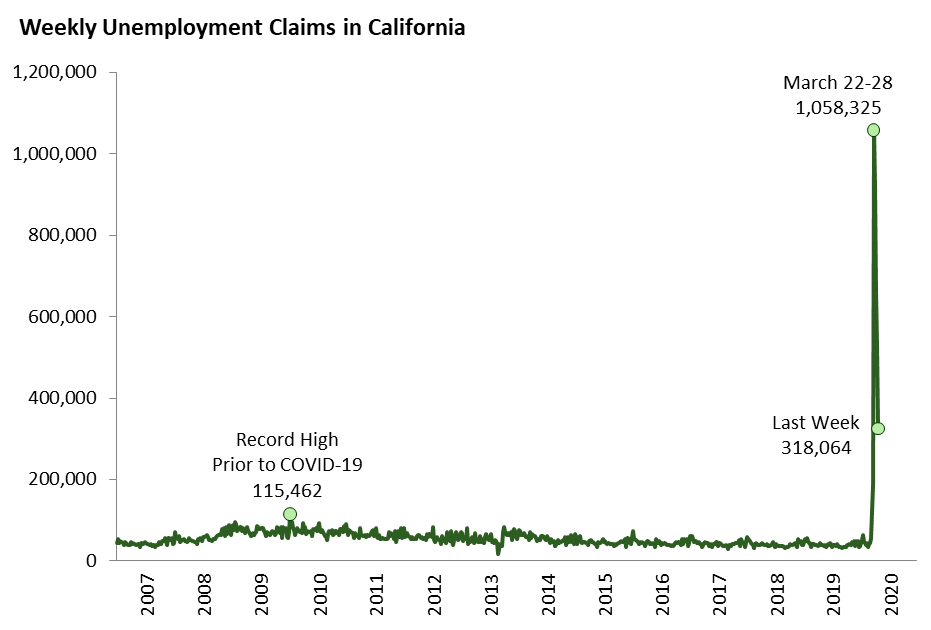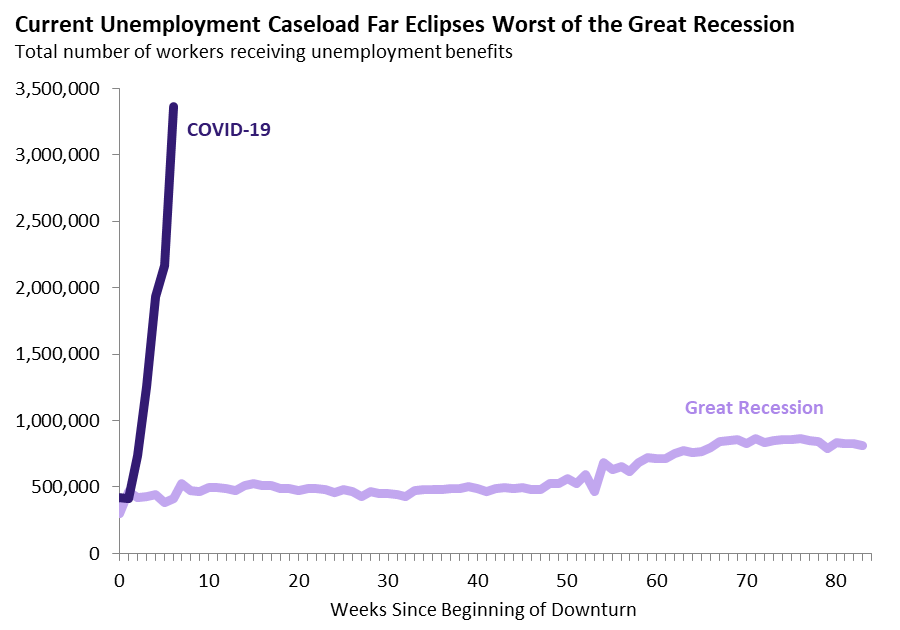Unemployment claims are a useful indicator of the health of the state’s economy. Today the U.S. Department of Labor (DOL) released data on the number of unemployment claims processed by state labor departments during the week of April 19 to April 25. Below we offer some observations on these weekly claims data.
Weekly Claims Continue to Slow But Remain Very High. California had 318,064 initial claims during this period. Claims have trended down consistently over the last month after peaking at about 1 million during the week of March 22 to March 28. Nonetheless, the claims total for last week still is well above the record high prior to the COVID-19 outbreak of 115,462 in January 2010.
DOL Report Does Not Accurately Reflect Number of Continued Claims. Last week, we noted an inexplicable drop in the total number of workers receiving benefits (also referred to as continued claims or insured unemployment) reported by DOL. We have since learned that the number in the DOL report does not accurately reflect the actual number of continued claims in California. Instead of a count of continued claims, the reported number is the total additional weeks of benefits requested by workers during the prior week. Workers generally must “recertify” with the California Employment Development Department every two weeks to request an additional two weeks of benefits. In the absence accurate data, we roughly estimate the number of continued claims from the DOL report by taking an average of the last two week’s reports. This suggests California has 3.3 million continued claims. Further, the inexplicable drop in last week’s report disappears when looking at the two week average. As can be seen in the graphic below, continued claims have risen consistently since early March.
Continued Claims Well Above Great Recession Levels. The number of workers receiving benefits right now remains more than three times the highest levels seen during the Great Recession. That being said, a major factor that contributed to the severity of the Great Recession is that so many people were unemployed for such a long period of time. While the current number of unemployed workers exceeds the Great Recession, it remains to be seen how long these workers will remain without work.


